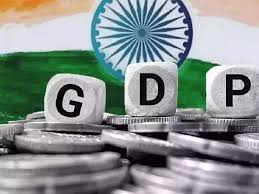Introduction
The global economic landscape in 2025 is shaped by rapid technological advancements, shifting trade alliances, and the aftereffects of pandemic-era disruptions. While some economies maintain their historical dominance, others are rapidly climbing the ranks thanks to industrial expansion, digital transformation, and resource advantages. This list covers the top 10 largest economies based on nominal GDP projections for 2025, along with the factors driving their success.
10. Canada

Projected GDP (2025): ~$2.23–$2.33 trillion
Growth Rate: ~1.4%–2.0%
Canada’s economy is projected to exceed $2 trillion USD in nominal GDP in 2025, making it one of the most stable and prosperous nations globally. The country benefits from abundant natural resources such as oil, gas, and minerals, alongside a strong services sector. Canada’s banking system is recognized as one of the safest in the world, and its immigration policies attract skilled workers who help maintain economic growth.
In addition to natural resources, Canada’s technology sector, particularly in artificial intelligence research, has been booming. Partnerships with major global tech firms and an emphasis on green energy projects are helping Canada diversify away from heavy reliance on fossil fuels. The Canadian dollar remains strong due to stable governance, low corruption, and well-regulated industries.
9. Italy

Projected GDP (2025): ~$2.42–$2.46 trillion
Growth Rate: ~0.4%–0.7%
Italy’s economy, worth roughly $2.3 trillion USD in 2025, is powered by its industrial production, luxury goods market, and tourism. Italy is a global leader in fashion, high-performance automobiles, and high-quality food exports. Brands like Ferrari, Gucci, and Armani carry significant cultural and financial weight.
Tourism contributes massively, with cities like Rome, Venice, and Florence attracting millions of visitors annually. The manufacturing sector, especially in northern regions like Lombardy and Veneto, remains competitive in global markets. However, Italy also faces challenges such as high public debt and a need for modernization in certain industries. The country is investing in renewable energy, advanced manufacturing, and innovation hubs to strengthen its future economic resilience.
8. Brazil

Projected GDP (2025): ~$2.13–$2.31 trillion
Growth Rate: ~2.0%–2.2%
Brazil is expected to hold a GDP of $2.6 trillion USD in 2025, solidifying its position as the largest economy in Latin America. Rich in natural resources, Brazil is a top global exporter of soybeans, coffee, beef, iron ore, and oil.
The Brazilian government has been working to stabilize inflation and attract foreign investment, especially in green energy and tech startups. Rio de Janeiro and São Paulo are emerging as centers for fintech innovation. However, Brazil still contends with socio-economic inequality and political instability. Despite these challenges, Brazil’s large population and agricultural dominance ensure it remains a key player in the global economy.
7. France

Projected GDP (2025): ~$3.21–$3.28 trillion
Growth Rate: ~0.6%–0.8%
France’s one of the largest economies is valued at $3.2 trillion USD in 2025. As one of Europe’s major powers, France’s economic foundation lies in diverse industries such as aerospace, luxury goods, agriculture, tourism, and pharmaceuticals. Airbus, LVMH, and Total Energies are examples of French global champions.
Tourism remains a massive revenue stream, with Paris being one of the most visited cities in the world. France also benefits from being a leader in renewable energy—especially nuclear power, which supplies most of the nation’s electricity. Additionally, France plays a crucial role in shaping European Union policies, giving it political and economic influence across the continent.
6. United Kingdom

Projected GDP (2025): ~$3.73–$3.84 trillion
Growth Rate: ~1.1%–1.6%
The United Kingdom’s GDP in 2025 is projected at $3.6 trillion USD, making it a financial and cultural powerhouse. London remains one of the world’s top financial hubs, hosting major global banks, insurance companies, and investment firms.
The UK’s economy is also supported by technology, pharmaceuticals, aerospace, and creative industries. The country’s higher education sector, with globally recognized universities like Oxford and Cambridge, draws talent from all over the world. While Brexit created initial economic challenges, the UK has been forging new trade agreements and investing heavily in renewable energy and AI research to stay competitive.
5. Japan

Projected GDP (2025): ~$4.19–$4.27 trillion
Growth Rate: ~0.6%–6.5%
Japan’s GDP in 2025 is expected to be $4.27 trillion USD. Despite an aging population, Japan remains a technological and manufacturing giant. The country leads in robotics, automotive engineering, and electronics. Companies like Toyota, Sony, and Panasonic continue to dominate global markets.
Japan’s cultural exports, including anime, video games, and cuisine, contribute significantly to its soft power. Investments in artificial intelligence, quantum computing, and green energy are helping Japan adapt to demographic and environmental challenges. The government also promotes policies to attract foreign investment and skilled immigration.
4. India

rojected GDP (2025): ~$4.19–$4.39 trillion
Growth Rate: ~1.1%–6.2%
India’s GDP is set to surpass $4.2 trillion USD in 2025, driven by its large and youthful population, rapid urbanization, and booming tech sector. The country has become a global hub for IT services, software development, and business outsourcing.
Manufacturing is expanding under the government’s “Make in India” initiative, and sectors like renewable energy, e-commerce, and pharmaceuticals are thriving. India’s agricultural exports also remain strong, supporting millions of livelihoods. With a growing middle class, domestic consumption is fueling economic momentum. India is also investing heavily in infrastructure, transportation networks, and digital transformation to maintain its growth trajectory.
3. Germany

Projected GDP (2025): ~$4.74–$4.92 trillion
Growth Rate: ~–0.1% to 0.8%
Germany, Europe’s largest economy, boasts a GDP of around $5 trillion USD in 2025. Known for its engineering excellence, Germany is home to global manufacturing leaders such as Volkswagen, BMW, and Siemens.
The country’s export-driven economy benefits from a skilled workforce, advanced research facilities, and strong industrial output. Renewable energy projects are central to Germany’s future plans, with wind and solar power taking center stage. Germany’s role as the EU’s economic engine also means it has considerable influence over regional policy and trade negotiations.
2. China

Projected GDP (2025): ~$19.23–$19.53 trillion
Growth Rate (2025): ~4.0%–4.6%
China’s GDP is projected to reach $19 trillion USD in 2025, making it the second-largest economy in the world. Over the last few decades, China has transformed into a global manufacturing hub, producing everything from electronics to textiles.
China is also a leader in 5G technology, electric vehicles, and renewable energy. The Belt and Road Initiative has expanded China’s economic influence across Asia, Africa, and Europe. However, the country faces challenges such as slowing population growth and trade tensions with major partners. Despite these hurdles, its vast consumer market and industrial capacity keep China at the forefront of the global economy.
1. United States

Projected GDP (2025): ~$30.34–$30.51 trillion
Real GDP Growth (2025): ~1.8%–2.7%
The United States remains the largest economy in the world in 2025, with a GDP exceeding $28 trillion USD. Its economic power comes from diverse sectors, including technology, finance, healthcare, defense, and entertainment.
The U.S. is home to tech giants like Apple, Microsoft, and Google, which shape global digital trends. The country’s innovation ecosystem, fueled by venture capital and top universities, continues to produce groundbreaking startups. The U.S. dollar remains the world’s reserve currency, reinforcing America’s dominance in global trade. With its strong consumer market and robust infrastructure, the U.S. is expected to maintain its top position for the foreseeable future.
The global economic rankings in 2025 highlight both the stability of established powers and the rise of emerging markets. While advanced economies like the U.S., China, and Japan continue to lead, nations like India and Brazil are making significant strides. As technology, trade, and energy evolve, these rankings may shift further in the coming decades.
Summary Table
| Rank | Country | GDP 2025 (USD Tn) | Growth Estimate (%) | Key Drivers |
|---|---|---|---|---|
| 1 | United States | ~30.34–30.51 | 1.8–2.7 | Services, innovation |
| 2 | China | ~19.2–19.5 | 4.0–4.6 | Exports, manufacturing |
| 3 | Germany | ~4.7–4.9 | –0.1–0.8 | Manufacturing, exports |
| 4 | India | ~4.2–4.4 | ~6.2 | Services, demography |
| 5 | Japan | ~4.2–4.3 | 0.6–6.5 | Technology, exports |
| 6 | UK | ~3.7–3.8 | 1.1–1.6 | Finance, services |
| 7 | France | ~3.2–3.3 | 0.6–0.8 | Aerospace, tourism |
| 8 | Italy | ~2.4–2.5 | 0.4–0.7 | Manufacturing, tourism |
| 9 | Canada | ~2.2–2.3 | 1.4–2.0 | Natural resources, trade |
| 10 | Brazil | ~2.1–2.3 | ~2.0–2.2 | Agriculture, mining, services |
Regional Growth Highlights: G20 Forecast
| Country | Projected Real GDP Growth (2025) |
|---|---|
| India | ~6.3% |
| China | ~4.7% |
| Indonesia | ~4.7% |
| Brazil | ~2.1% |
| U.S. | ~1.6% |
| Japan | ~0.7% |
| Germany | ~0.4% |
India shines as the fastest-growing G20 economy, followed by dynamic Asian emerging markets.